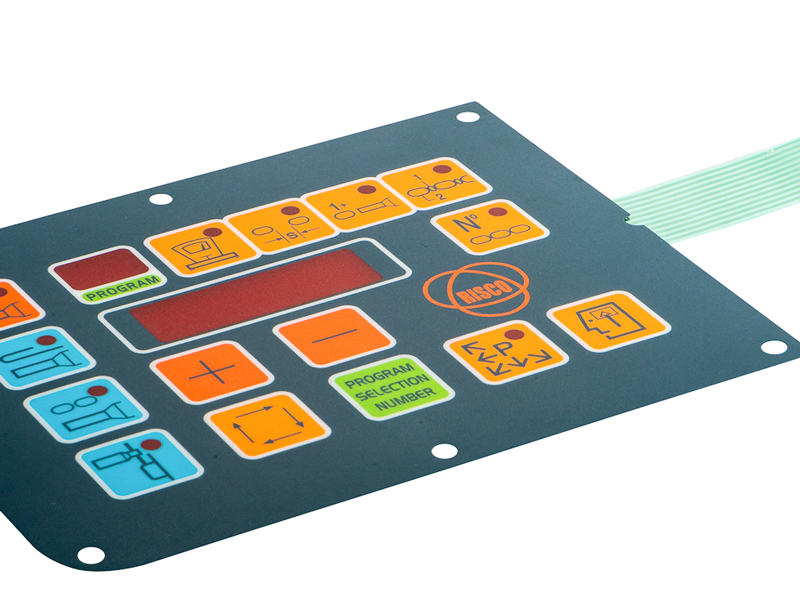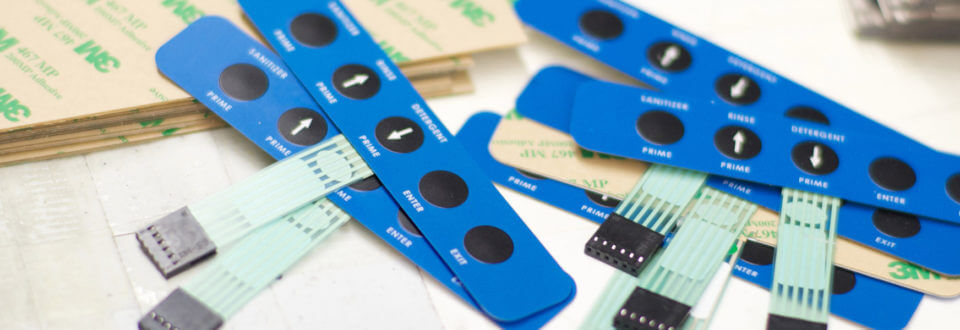Exploring the Different Types and Features of a Membrane Switch
Exploring the Different Types and Features of a Membrane Switch
Blog Article
Recognizing Membrane Switches: The Trick to Sturdy and Dependable Controls
Membrane layer switches over stand for an important facet of modern interface layout, blending performance with strength in numerous applications. These versatile parts not only help with customer communication but are additionally crafted to stand up to the roughness of requiring settings, from medical devices to industrial equipment. Understanding their construction, procedure, and the myriad advantages they offer is vital for designers and designers alike. As we explore the details of membrane layer switches, it comes to be clear that their function in boosting control systems is both complex and extensive, questioning concerning how ideal to take advantage of their capabilities in future innovations.
What Are Membrane Buttons?
Membrane switches are an advanced option in the realm of user interface modern technology, incorporating functionality and layout flawlessly. These tools offer as an interface in between individuals and digital systems, incorporating numerous elements right into a compact style. Normally constructed from versatile, slim layers of materials, membrane buttons are made to react to touch, allowing individuals to engage with equipment and digital gadgets effectively.
The primary elements of a membrane switch include a printed circuit layer, visuals overlay, and a spacer layer that prevents unplanned activation. The graphic overlay can be personalized to reflect brand identification or customer choices, enhancing looks while making sure use. Membrane layer buttons are frequently made use of in various applications, including medical tools, consumer electronics, and commercial equipment, owing to their durability and resistance to ecological variables such as dampness and dirt.
One of the crucial advantages of membrane buttons is their ability to endure deterioration, making them excellent for high-traffic settings. Additionally, they are lightweight and require minimal space, permitting ingenious designs in product growth. In general, membrane layer switches represent a efficient and practical choice for contemporary digital user interfaces, weding innovation with user-centric design principles.

Just How Membrane Layer Changes Work
The operation of membrane layer switches joints on a straightforward yet effective mechanism that converts user input into electronic signals. When an individual presses the switch, the top layer flaws, enabling a conductive element in the circuit layer to make call with an equivalent conductive pad on the bottom of the graphic overlay.
The design of membrane switches can differ, however they typically include domes or tactile elements to give comments to the customer, improving the total experience. The materials utilized in membrane layer buttons, such as polyester or polycarbonate, contribute to their resilience and resistance to ecological variables, including moisture and dust. Furthermore, the printed circuits are generally encapsulated, which protects them from wear and tear in time.

Benefits of Membrane Layer Switches
Among the primary advantages of membrane layer switches is their versatility in layout, permitting them to be personalized to satisfy specific customer demands and visual requirements. This versatility extends to different markets, where various shapes, dimensions, and colors can be used to boost customer interaction and visual charm.
In addition, membrane buttons are known for their resilience. Constructed from robust materials, they are resistant to dirt, wetness, and physical wear, which significantly extends their life expectancy here compared to typical mechanical switches. This durability makes them specifically ideal for high-traffic environments and applications needing durability.

In addition, membrane switches use a structured account, leading to a thinner layout that can be incorporated right into different tools without including bulk. This attribute not only enhances the aesthetic appeal however also adds to an extra ergonomic item layout.

Applications of Membrane Buttons
Versatile and user-friendly, membrane buttons find applications throughout a wide variety of sectors, including medical gadgets, customer electronics, and industrial devices. In the medical field, these buttons are integral to tools such as diagnostic equipment, person surveillance systems, and mixture pumps, where dependability and convenience of cleansing are critical. Their ability to maintain and withstand harsh atmospheres capability makes them ideal for such applications.
In consumer electronic devices, membrane buttons are utilized in products like microwaves, washing equipments, and remotes - membrane switch. Their streamlined layout permits intuitive individual interfaces, enhancing the general customer experience while supplying resilience and resistance to deterioration
Commercial equipment likewise gains from membrane layer buttons, especially in control panels for machinery and automation systems. These buttons supply protection against dirt and dampness, making certain consistent performance in tough environments. Their personalized features permit makers to tailor them to particular operational needs, boosting performance and performance.
Selecting the Right Membrane Switch Over
When choosing go to my blog a membrane layer switch, it is crucial to think about different factors that affect efficiency and suitability for certain applications. The main considerations include ecological problems, tactile comments, resilience, and style requirements.
First, analyze the operating setting; switches exposed to moisture, chemicals, or extreme temperature levels need certain products to ensure long life and capability. Next off, review the requirement for responsive comments. Depending upon customer interaction, some applications may profit from a tactile action to verify activation, while others may favor a non-tactile layout for aesthetic reasons.
Sturdiness is an additional vital variable; membrane layer buttons ought to be made to hold up against regular use, impacts, and abrasion. Guarantee the picked switch can endure the expected lifecycle, websites especially in high-usage situations.
Conclusion
In verdict, membrane changes offer as necessary parts in the layout of resilient and trustworthy control systems across numerous industries. The adaptability of membrane switches permits for customized remedies that satisfy specific functional requirements, strengthening their importance in modern-day innovation.
Membrane switches stand for a critical aspect of modern-day user interface design, mixing functionality with resilience in numerous applications.Membrane layer switches are an advanced service in the world of individual interface innovation, integrating performance and layout perfectly. Normally created from adaptable, slim layers of products, membrane layer switches are created to respond to touch, allowing customers to communicate with equipment and digital tools properly.
The style of membrane buttons can vary, yet they typically include domes or tactile components to give feedback to the user, enhancing the general experience.In final thought, membrane layer changes serve as necessary parts in the design of dependable and durable control systems throughout various industries.
Report this page